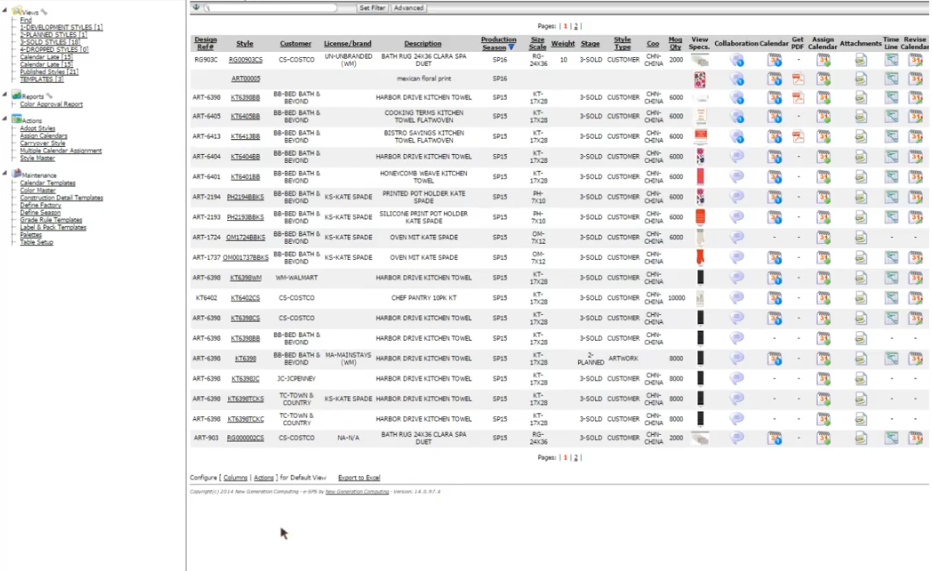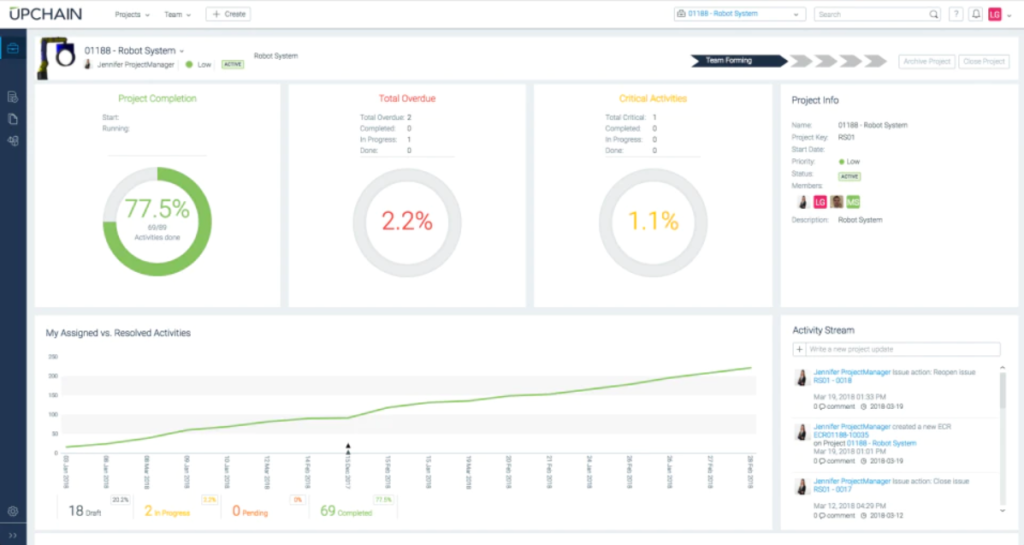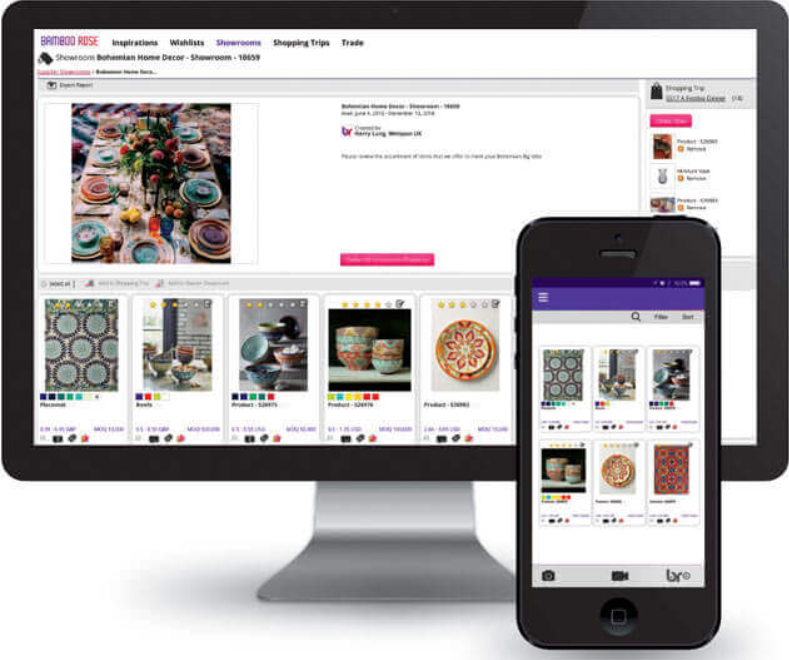10 Best PLM Software Shortlist
Here's my pick of the 10 best software from the 20 tools reviewed.
With so many different PLM solutions available, figuring out which is right for you is tough. You know you want to streamline processes and ensure that product information is efficiently managed and accessible throughout the entire lifecycle but need to figure out which tool is best for it. I've got you! In this post I'll help make your choice easy, sharing my personal experiences using dozens of different tools with large teams and complex products, with my picks of the best PLM software.
What is PLM software?
Product Lifecycle Management (PLM) software is a type of tool that supports product development and management processes. It serves as a digital platform for organizations to coordinate and manage product-related data, documents, and workflows throughout the entire product lifecycle. PLM software aims to enhance efficiency, reduce errors, and accelerate time-to-market for new products.
Product managers and product development teams rely on the software to plan and manage their work and see new products and features through to completion. Among the features that make this possible are document management, version control, change management, Bill of Materials (BOM) management, collaboration tools, and integration with other enterprise systems like CAD and ERP.
Overviews Of The Top PLM Software
Here’s a brief description of each of the PLM software tools that are featured on my top list. I’ve added screenshots of each platform’s user interface as well as notes on its best use case and overall functionality.
Jama Software is a requirements management software that helps companies manage all aspects of the product lifecycle from concept to delivery. It combines powerful requirements management capabilities with advanced analytics for smarter decision-making and offers intuitive user interfaces and configurable workflows.
Jama Software’s PLM capabilities help teams plan, design, build, test, and launch products on time and within budget. It provides visibility into every step of the product lifecycle so that teams can identify bottlenecks before they become problems. It also allows users to track changes in real-time so that everyone is up to date on the latest version of a product or feature. This version control lets you track, audit, and compare different versions of a project before releasing it in its final form, helping ensure accuracy and thoroughness throughout the development process.
Jama Software's requirements authoring feature is an advanced product requirements software solution designed to help businesses and organizations create, manage, and track product requirements throughout the development process. Critically, this feature allows end users to collaborate on requirements in real-time and generate detailed reports that include filters. With straightforward review capabilities, stakeholders can easily approve or reject changes as they are made.
Jama Software integrates with other applications through Jama Connect. This connector lets you sync traceable information without replacing the current tools in your tech stack. Integrations include MathWorks, Jira, TFS, Windchill, Jenkins, Bugzilla, Excel, and GitHub.
Pricing for this tool is available upon request, and a 30-day free trial is available upon registration through the website.
Productboard is an agile product management tool best suited for digital industries that lets users scrap spreadsheets, consolidate user feedback, define product strategy, earn buy-in for plans, and preserve existing workflows. Productboard is an IoT company trusted by customers like Zoom, Zendesk, and Avast.
Productboard has a pleasant visual interface that maps insights out into product ideas and features that make it easy to create timely and relevant products using organized and detailed information from different sources across the production process.
Because Productboard caters to clients in tech, many features can take more time to learn. More training videos and tutorials would be helpful to users who are just getting started with such robust software.
Productboard costs from $20 and offers a 15-day free trial.
Propel is a cloud-native product solution that allows its users to gather and optimize new product introduction, collaborate on a company-wide scale, design quality data databases, and leverage productivity tools. Propel even offers accessibility through your phone using their smart mobile app.
Propel is a user-friendly platform that helps you stay organised with workflow customization features that enable you to provide customers with better service, monitor product details and operations, and even compare revisions details.
Because Propel is built on Salesforce, having no previous experience with Salesforce may result in an additional learning curve.
Propel offers a free demo and customized pricing is available upon request. Note that Propel offers packages with a minimum of 10 users.
Teamcenter is Siemens PLM software—an adaptable product lifecycle management system that’s deployable on-premise or by cloud SaaS that has features for BOM management, change management, document management, and NX integration among others. It promises to connect people and processes across domains and departments and throughout your supply chain.
Siemens Teamcenter has a simple interface that makes the software easy to understand and use. CAD history and revisions are accessible and easy to import and export, toolbars are customizable, and viewing 3D models without the need for integrations makes Teamcenter one of the best in the market.
Because Siemens Teamcenter caters to more comprehensive and advanced needs, opening large data files, 3D models, tends to cause delay and lag. Some may find navigation a bit of a challenge due to the sheer number of features within the software.
Siemens Teamcenter offers a 30-day free trial and customized pricing is available upon request.
Andromeda PLM by NGC is a cloud-based product lifecycle management system made for the fashion and footwear industries. It comes with features for planning, merchandising, design, costing, sampling, quality, bill of materials creation, and sourcing. It’s also equipped with workflow calendars and customisable dashboards.
With Andromeda PLM by NGC, companies can create a database of all the information necessary for the manufacturing processes all the way through launch and marketing. Transactions are a breeze with no more missing information from suppliers, vendors, and collaborators. Technical specifications are standardised and quickly understood by manufacturers.
Andromeda PLM comes across as slightly outdated when it comes to their graphical user interface. Cutting edge brands may not feel inspired by the lackluster UI or stale. Text-heavy layout. However, beauty is in the eye of the beholder and this can all be overlooked.
Andromeda PLM by NGC offers a free demo and customized pricing is available upon request.
Upchain is a cloud PLM software solution for modern manufacturing that allows users to securely collaborate on a global scale. Upchain enables users to work together in real time to keep projects going without delays, allowing you to stay within budget. Upchain comes with CAD and Microsoft Office plugins, BOM management, API integrations, ECR creation and management and so much more.
Upchain provides users with a single source of truth where documentation is easily accessible and their cloud technology makes it so that no matter where team members and collaborators are, all the information is available to everyone. Their transparent and modest pricing makes them a great PIM starting point for small and medium businesses.
As Upchain continues to improve its services, many features customers are looking for are still in the works. One thing they’ve managed to overlook is the fact that their tutorials have now become outdated. It doesn’t help that some terms may cause confusion in entry-level users.
Upchain costs from $30/user, offers 3 pricing plans, and a free demo.
Centric Retail PLM comes with features that let users speed up time to market, increase product introduction success, boost product innovation, launch more SKUs, get closer to customers, lower COGS & improve product margins, streamline private/white label and supplier co-created development, and maximize product assortment value.
Centric Retail PLM not only serves as a central process and storage solution, it is also a global platform that allows companies to respond to their customers and communicate with team members no matter where they are.
Centric Retail PLM is designed for companies with thousands of suppliers, vendors, retailers, and products in mind and so the many features in the software, a number of them customizable, may pose a challenge to new users.
Centric Retail PLM offers a free demo and customized pricing is available upon request.
Bamboo Rose is a multi-enterprise and supply chain platform that strives to reduce cycle time and sampling costs through a variety of productivity and efficiency features. The tool can help by giving users one version of truth, real-time design and product development processing features, standardized design elements, and collaborative 3D designing, as well as a strong private label product portfolio.
Bamboo Rose enables users to work with various suppliers in one platform, streamlining multiple processes and getting rid of siloed information. The platform makes it easy to see all the relevant data across different aspects of the development and production cycle.
Bamboo Rose is packed with features which means that there could be a learning curve in terms of navigation and feature set mastery.
Bamboo Rose provides pricing details upon request.
Aras Innovator is trusted by companies such as GE, Honda, Motorola, and XEROX and is used in almost 150 countries. It comes with the following features: new product development and introduction, multi-CAD data management and visualization, project management, and configuration and change management.
Aras Innovator makes it easy to connect with other software through its many integrations, allowing users to put things in and pull things out of the software without much trouble.
Unfortunately for more simple users, Aras Innovator can come off as a rather sophisticated or more advanced piece of software. There are a lot of opportunities to customize but it’s not easy doing so, making it seem like Aras Innovator enjoys making users rack up on their number of clicks within the software.
Aras Innovator offers pricing details upon request.
ClickUp is PLM software that offers everything from task lists, collaborative docs, in-app chat, and goal tracking. Thanks to a broad range of features, they can help you manage all the moving parts of your product lifecycle. ClickUp is currently used by over 800,000 teams across companies like Samsung, Belmond, Booking.com, and IBM.
Key features include various customizable task status reports, bug and issue tracking, sprint automations, marketing campaign management, drag-and-drop content schedules, collaborative mind maps, and Form automations for customer feedback.
ClickUp offers native integrations with Slack, G Suite, Dropbox, and many more tools, as well as over 1,000+ integrations through Zapier.
ClickUp is free to use for unlimited users with some feature limitations. Paid plans cost from $5/user/month and offer a 30-day refund policy if you’re unsatisfied with the app.
The Top PLM Software Comparison Chart
Here is a table where you can compare the tools we just covered in the overviews.
| Tools | Price | |
|---|---|---|
| Jama Software | Pricing Upon Request | Website |
| Productboard | From $20/user/month (billed annually) | Website |
| Propel | Pricing upon request | Website |
| Siemens Teamcenter | Pricing Upon Request | Website |
| Andromeda PLM by NGC | Pricing Upon Request | Website |
| Upchain | From $30/user | Website |
| Centric Retail PLM | Pricing Upon Request | Website |
| Bamboo Rose | Pricing Upon Request | Website |
| Aras PLM | Pricing Upon Request | Website |
| ClickUp | From $7/user/month | Website |

Compare Software Specs Side by Side
Use our comparison chart to review and evaluate software specs side-by-side.
Compare SoftwareOther PLM Tools
Here’s a few more that didn’t make the top list. If you need additional suggestions for product lifecycle management, check these out.
- QA Wolf
Best for all sizes of companies where web-applications are their main product
- New Relic
Best for product lifecycle management through real-time performance insights and analytics
- Wrike
Best product lifecycle dashboards & data visualizations
- Zeda.io
Best for AI-driven product insights
- Jira Service Management
Best product lifecycle management for software devs
- OpenText
Best for information management
- PDXpert PLM
Best for the process control industry
- Sterling PLM
Best for the automotive industry
- 3DEXPERIENCE Platform | TECHNIA
Best for aerospace & defense industries
- Autodesk Fusion Lifecycle PLM
Best for engineering and construction
Selection Criteria for the Best Product Lifecycle Management Software
Here are the top factors I took into consideration while putting together my list of top PLM software solutions:
Core Functionality
As a baseline, a PLM system should help you streamline and automate various processes within your product management lifecycle. This means having resource management tools and the ability to oversee the team members and time that contributes to your product’s development. It should also have process management capabilities to facilitate each stage of the product lifecycle.
Key Features
Here are a few specific key features I looked for in the PLM platforms I tested:
- Product roadmapping: The ability to outline the stages of your product’s development and plan projects and features. Bonus points if there are templates available.
- Product information management: This includes bill of materials or BOM management and the storage of other important data and documents.
- Quality management: Any tools that help with quality control and testing, as well as regulatory compliance for your products.
- Portfolio management: It’s great to be able to manage your entire product portfolio in the same PLM system.
- Analytics and reporting dashboards: The ability to monitor product performance metrics in real-time and assess opportunities for improvements.
Usability
The user-friendliness of software solutions is always important to me. It’s frustrating when a tool that’s meant to support your team takes too long to implement and get the hang of. I looked for PLM platforms with simple user interfaces and intuitive functionality.
Integrations
Ideally, you’ll want a PLM software that connects to your other important product development tools. I looked for software that integrates with computer-aided design (CAD) software, project management software, and enterprise resource planning (ERP) software. I also kept an eye out for tools that could import data from spreadsheets or have APIs you can use to build custom integrations.
FAQ: More on Product Lifecycle Management
Have some questions about the processes and management tools used across a product lifecycle? Check out this handy FAQ for answers!
What is Product Lifecycle Management?
Product lifecycle management (PLM) is the process by which product teams plan, create, launch, and eventually retire new products. It also covers the iterative process of updating existing products and launching new features, or removing existing features and functionalities. The stages of an entire product lifecycle are:
- Introduction: New product introduction is when you come up with a concept, establish a product market fit, and bring your new product to market.
- Growth: At this stage, your product has reached profitability and you’re developing new features, related products, or additional services. It’s about turning a good idea into a scalable product with longevity.
- Maturity: Most products will eventually hit a plateau and have reached their peak. At this stage, you may decide to shift your priorities to a new product or invest in reinventing your existing product.
- Decline: Eventually, your product will face an over-saturated market, redundancy, or replacement. You’ll offboard existing clients and plan how you’ll phase out your product.
To manage your product’s lifecycle, you’ll want to have systems and processes in place. This includes your supply chain and manufacturing process, data and document management systems, product testing and quality control methods, and regulatory compliance safeguards. It’s also about ensuring you have the right business processes in place for effective project management and roadmap planning.
While the above information outlines a more traditional product lifecycle approach, there are also newer approaches to the product lifecycle. An agile methodology can make for a quicker time to market, but usually also means compromising product quality for development velocity. This is a powerful approach for startups and small businesses embracing a ‘win fast, fail fast’ approach or companies seeking to expand their product portfolio.
What’s the Difference Between PLM Software and PDM Software?
Product lifecycle management (PLM) and product data management (PDM) software have some overlapping tools and features. But these two types of platforms ultimately serve different functions in the product development process.
PLM tools are centered around the planning, design, execution, testing, launch, and marketing of a single product or series of products. PLM software tends to encompass:
- Workflows
- Milestones or stage gates
- CAD/BOM syncing
- Change management processes
PDM tools, on the other hand, are all about the collection, navigation, storage, and security of a different type of asset: data. They may host data in the cloud or on-premise, and tend to encompass:
- Controlling and maintaining a “master file”
- Tracking each changes with each new version update
- Assigning part numbers for each part/file across the overarching assembly
Other Product Management Software Reviews
Looking for more software to support your product team? Here are some other software reviews we’ve written:
- Digital asset management software
- Agile PLM software
- Product Design Software For 3D/2D Rendering
- ALM Software For Managing Digital Product Life Cycles
What Do You Think About the Above Product Lifecycle Management Software?
Have you tried out any of the software product life cycle tools listed above? What product lifecycle management marketing tools would you add to this list? Let us know in the comment section.




















